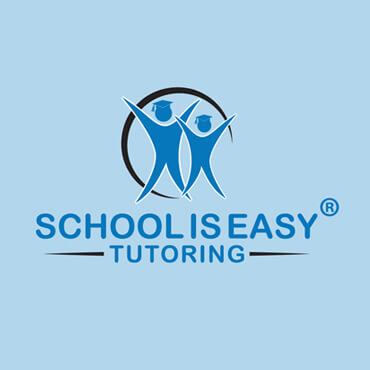
How to Help Kids Find Real News Stories
Finding good news stories can feel overwhelming for children who struggle with writing. This lesson breaks down the elements of a news story into simple steps that make it easier for kids to spot newsworthy events around them. Here’s how to teach your child what makes something worth writing about.
See our other articles on this series below:
- Teaching Kids How to Start a Newspaper (1): Understanding the Fundamentals of Media
- Teaching Kids How to Start a Newspaper (2): The Elements of a News Story
- Teaching Kids How to Start a Newspaper (3): Learning to Write News Copy (Part 1)
- Teaching Kids How to Start a Newspaper (3): Learning to Write News Copy (Part 2)
- Teaching Kids How to Start a Newspaper (4): Learning to Research and Identify Sources of Information
- Teaching Kids How to Start a Newspaper (5): Learning to Critique the Media and Spot ‘Fake News’
- Teaching Kids How to Start a Newspaper (6): Tips and Resources for Fact Checking
- Teaching Kids How to Start a Newspaper (7): Covering Magazines and Feature Stories
In our first lesson, we covered the role of media in democracy. This week, we’ll learn how to teach kids the elements of a news story for their student newspaper projects.
Teaching Kids How News Stories Get Selected
Help children understand that newspapers are businesses that need to make money. They sell advertisement space to other businesses, and these ads appear next to news stories. The spaces left for news stories are called “newsholes.”
Simple explanation for kids: “Newspapers need readers to see the ads so companies will pay for them. That’s why newspapers choose stories that lots of people want to read.”
Here’s how to explain this concept:
- Step 1: Show the connection Point out ads in newspapers or online news sites. Ask kids: “Why do you think these ads are here?”
- Step 2: Explain the balance Tell children that newspapers need stories people find interesting, but they also need to keep advertisers happy.
- Step 3: Connect to their student newspaper Ask: “What stories would your classmates want to read about your school?”
This helps student reporters understand why some stories get published while others don’t.
What Makes Stories Newsworthy for Student Newspapers
There’s a reason newspapers don’t cover ordinary, everyday events. News focuses on things that are new, different, or important. This concept helps kids understand what to look for in their school or community.
Teaching example: Use a health story to show how news selection works. When Ebola made headlines, it killed about 8,000 people in 2014. But tuberculosis kills 1.5 million people each year and gets much less coverage. Why? Because Ebola was new and scary, while tuberculosis is an old disease.
Activity for kids: Have children list five things that happened at school this week. Then ask: “Which of these would other students want to read about? Which ones are new or different?”
This exercise helps student reporters identify stories that matter to their audience.

Teaching Kids the Elements of News Stories
Journalists look for specific types of events that make good news stories. Teaching children these elements helps them find their own stories for student news blogs and school publications.
The key elements include:
- Timeliness: Did it happen recently?
- Proximity: Is it close to your readers?
- Impact: Does it affect many people?
- Prominence: Does it involve someone important?
- Human interest: Is it an unusual or touching story?
- Conflict: Is there disagreement or competition?
- Novelty: Is it strange or unexpected?
Practice activity: Give kids a list of school events and have them identify which elements each one has. For example, a new teacher joining the school has timeliness, proximity, and possibly human interest.
Story Ideas Perfect for Student Newspapers
Help children brainstorm newsworthy events happening around them. Here are ideas that work well for student reporters:
School-based stories:
- Sports games and competitions
- New technology or equipment purchases
- Upcoming performances or concerts
- Teacher or staff introductions
- Classroom projects with community impact
Community stories:
- Local farmers markets or seasonal events
- Library new book collections
- Community fundraisers or volunteer projects
- Interesting personal stories from classmates or teachers
Practice exercise: Send student reporters on a “news hunt” around school. Give them 15 minutes to find three potential stories using the elements they learned.
How to Teach Kids to Write News Pitches
A news pitch is a short letter that explains why someone should publish your story. Teaching children to write pitches helps them organize their thoughts and sell their story ideas.
Simple pitch structure for kids:
- What happened?
- Why should people care?
- Who can you interview?
- When will you have it finished?
Teaching activity: Act as the newspaper editor while students practice pitching their story ideas. Ask questions like: “Why would our readers care about this?” and “What makes this story different?”
Helpful resources for teaching pitches:
“Journalism Lesson: Pitch the Idea” – SubjectToClimate is a hands-on lesson plan where students brainstorm, collaborate, and practice pitching feature article ideas—ideal for teaching real-world journalism skills through climate storytelling.
“Pitching a Story 101: How to Craft a Winning Media Pitch” – Source of Sources is a practical guide that walks through the key components of a successful media pitch, including subject lines, audience targeting, and storytelling structure.
These resources help you plan activities that teach students how to present their story ideas effectively.

Connecting News Selection to Critical Thinking
Understanding how news gets selected makes children better critical thinkers. When kids learn that stories are chosen for specific reasons, they start asking better questions about what they read and watch.
Questions to teach kids:
- Why is this story being covered?
- What other stories might not be getting attention?
- Who benefits from this story being published?
- What information might be missing?
Classroom discussion: After reading news articles together, ask students: “What do you think the newspaper wanted us to learn from this story?”
This approach helps student reporters think more carefully about the news they consume and create.
Building Research Skills for Student Reporters
Teaching children about news elements also builds their research abilities. When kids understand what makes stories newsworthy, they become better at finding and developing their own story ideas.
Skills students develop:
- Identifying important events in their community
- Asking questions about why things happen
- Understanding their audience’s interests
- Organizing information logically
- Presenting ideas clearly
These abilities help with all school subjects, not just student newspaper projects.
Public Relations and News Creation
Advanced students can learn that some news stories come from public relations companies that help organizations get media coverage. This concept introduces the idea that not all news happens naturally – sometimes it’s created or promoted.
Simple explanation: “Some companies hire people to help them get in the newspaper by creating events or stories that reporters will want to cover.”
For teachers wanting more background on this topic, check out:
“Introduction to Public Relations” – Alison is a free online course that covers the basic functions and concepts of public relations, essential for maintaining relationships with the public.
Putting It All Together
When you teach children the elements of a news story, you’re helping them become better writers and critical thinkers. They learn to spot interesting events, understand why certain stories get attention, and develop the skills to create their own compelling content for student publications.
The process of understanding news selection helps kids see that media choices affect what people think is important. This awareness makes them smarter consumers of news and better student reporters for their school publications.

Need More Help With Your Child’s Writing?
Learning about news story elements gives children a framework for finding and developing story ideas. Many kids who struggle with creative writing find news writing easier because it focuses on real events and follows clear structures.
If your child needs extra support with writing skills, School is Easy offers personalized tutoring that builds confidence and improves grades. Our experienced tutors help students who struggle with writing, teaching them to identify interesting stories and present information clearly. Connect with us today to see how we can help your child succeed with their student newspaper projects.




